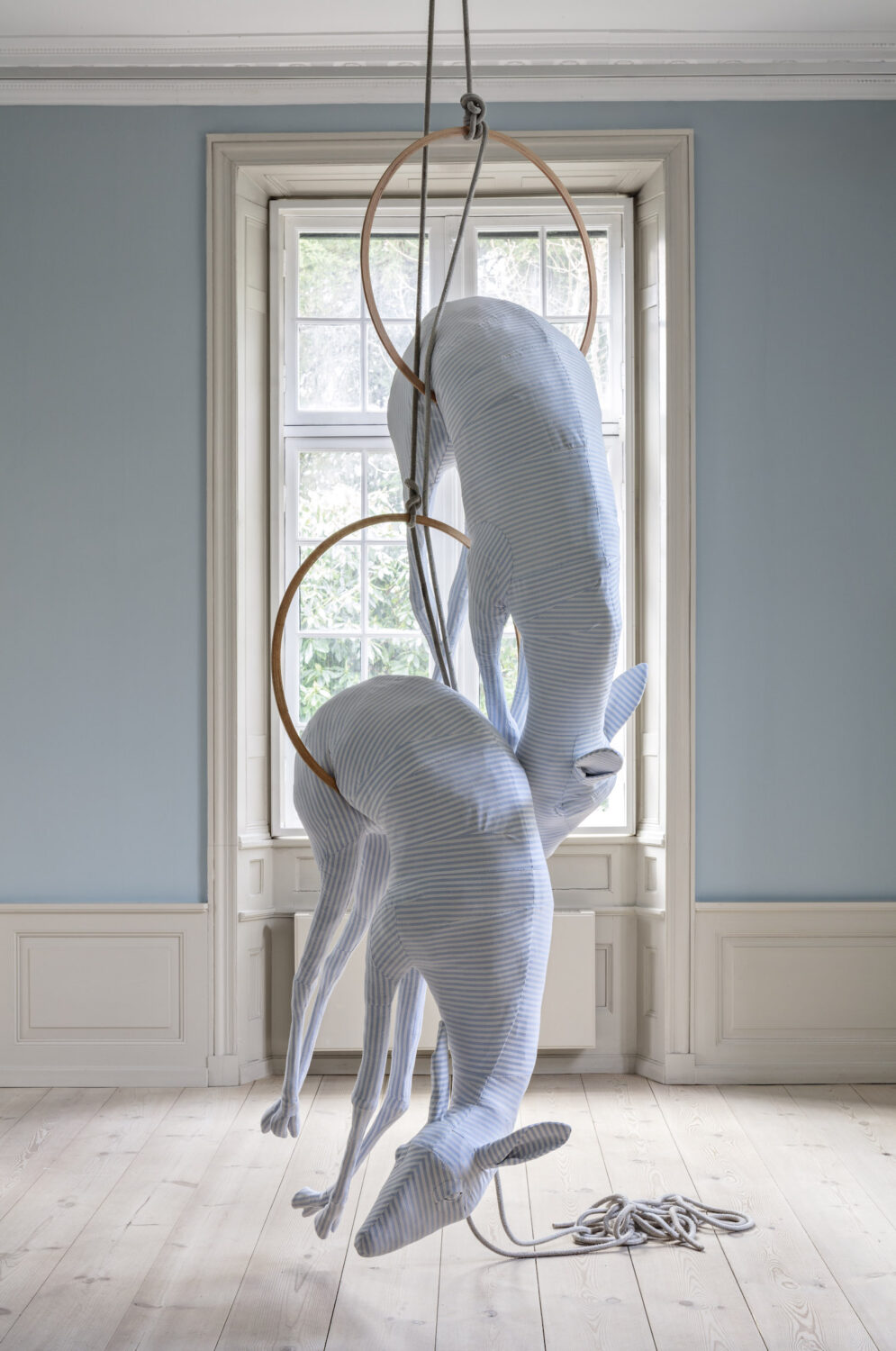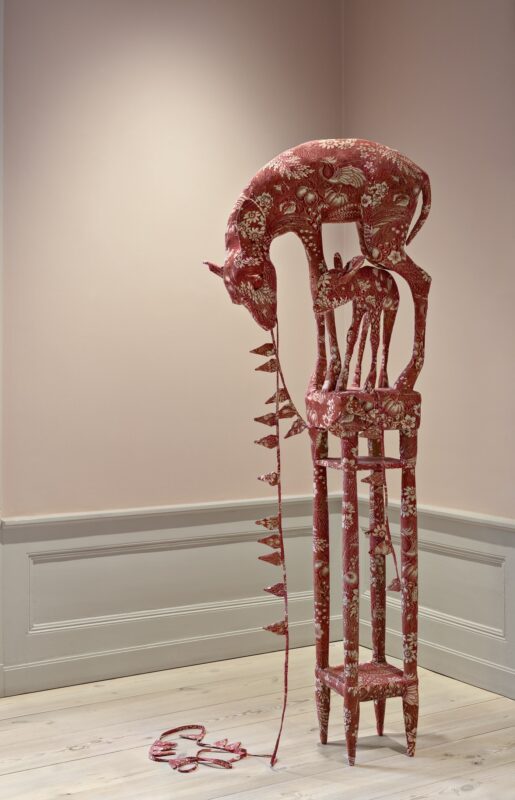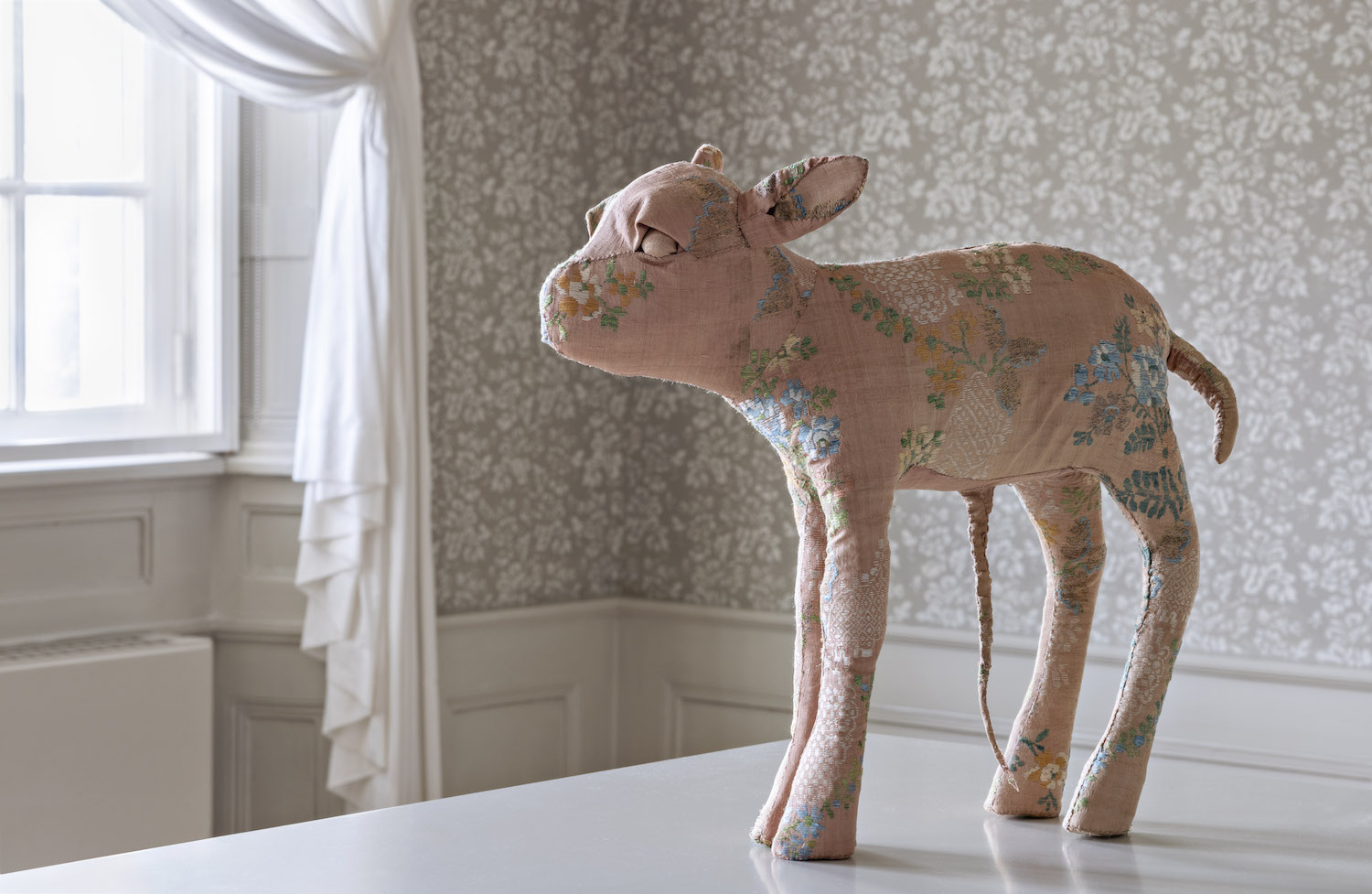There is an intense melancholic atmosphere surrounding Martine Myrup’s sculptures
Martine Myrup (born 1977) works with figurative narratives in textiles and various readymades. The subject matter and material choice are not new for the artist, but it is as if Øregaard’s beautiful and cultivating exhibition halls become a resonant space for this tone of an elegy over something we are about to lose. Animal figures in textiles may sound like an artistic detour of the kind only Winnie the Pooh and Piglet would take in the Hundred Acre Wood. But Martine Myrup masters her tools so tightly and deliberately that the works become relevant and deeply disturbing.
So, the sculptures depict animals. Among other things, they are tethered, suspended, lying about, imprisoned in showcases, placed on chair-shaped pedestals, or otherwise deprived of their freedom. The sculptures are designed so that there is no doubt that they are depictions of animals – and in a single case, a little boy in a glass cage – but the animals are apparently blind, blinded, or at least asleep. Which can both add a character of something universal:
Not an individual animal. But animals as animals are. And that they appear pitiful. Victims as they are of humanity’s indifference to nature and perception of nature as an economic resource. And sometimes something pleasant to look at.
Nature is “one of existence’s most beautiful Ziraters,” as stated in J.P. Jacobsen’s 1872 novella, “Mogens,” which is sometimes used as a metaphor for how humans see themselves as beings outside of or above nature with a natural right to manage it. In Martine Myrup’s exploration of the issue, she contributes to the discussion of humans and nature and possibly the post-human, which has characterized several exhibitions and biennials at home and abroad in recent years.
Another common feature of the sculptures is that they are made of various colored textiles. Not dyed for the occasion but found for the purpose. This involves recycling textiles; often of older dates, perhaps valuable fabrics, and their use gives the figures the character of ornaments – or in another potential, art objects worth collecting.

Øregaard Museum – a significant scene for the exhibition
This also draws a connection to Øregaard and to the collection, which is newly hung in connection with Martine Myrup’s solo exhibition. Øregaard, designed by Joseph-Jacques Rameé, was built in 1806-8 as a country house for a wealthy family, who also had their children portrayed by Eckersberg, thereby laying some cornerstones for Øregaard’s later significance as an art museum.
After various private owners, Øregaard was acquired by Gentofte Municipality and converted into a museum in 1921. The collection includes examples of works from the Danish Golden Age to the mid-20th century. In addition to paintings and sculptures, examples of silverwork, porcelain, and furniture architecture from the 19th century are also displayed, as Øregaard appeared as a distinguished bourgeois home with surrounding park.
Martine Myrup’s exhibition is included in this context in various ways. For example, especially the paintings – from Eckersberg, Jens Juel and J. Th. Lundbye to Emma Thomsen and other flower painters to urban interpreters like Jais Nielsen and Paul Fischer – show different perceptions of values, which have also reflected changing generations’ views of nature. They function well as images in their own right, but also as a precondition for Martine Myrup’s sculptures.
The figures, on the other hand, inadvertently slide into the bourgeois home’s fine aesthetic self-presentation as – precisely art objects. They could take on an overwhelmingly decorative character in the context of the finely patterned textiles that make up their surfaces. But even on that point, the works appear disturbingly mournful, inviting recognition that we should seriously consider our way of treating animals and nature in the broadest sense.
Facts
A BIRD SINGS IN THE BUSH OF YOUR BONES
Martine Myrup x Øregaard Museum
8.2. – 25.8.2024

More knowledge in the Archive
Would you like to know more about textile works? Search the Archive at Formkraft and discover a treasure trove of exciting articles. Read more


